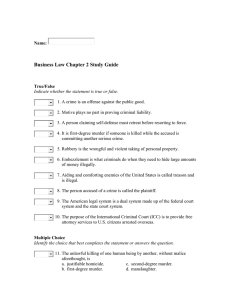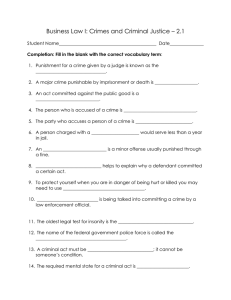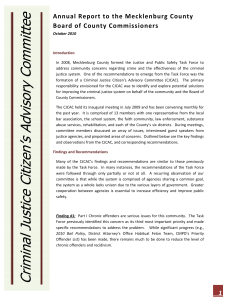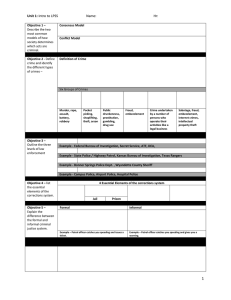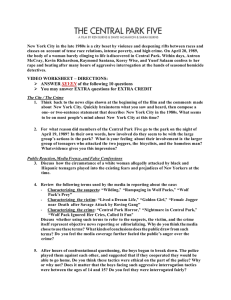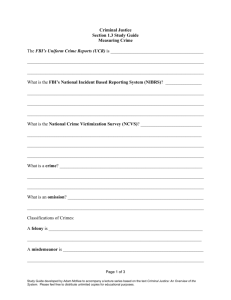Chapter 2.1 Guided Notes
advertisement
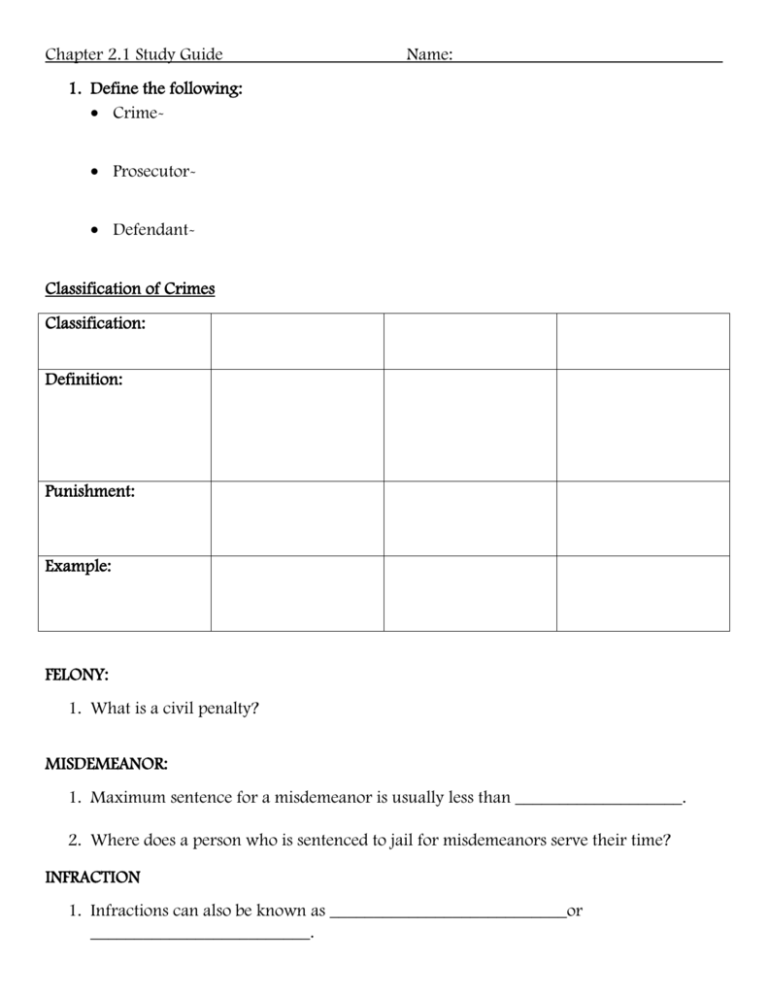
Chapter 2.1 Study Guide Name: 1. Define the following: Crime Prosecutor DefendantClassification of Crimes Classification: Definition: Punishment: Example: FELONY: 1. What is a civil penalty? MISDEMEANOR: 1. Maximum sentence for a misdemeanor is usually less than ___________________. 2. Where does a person who is sentenced to jail for misdemeanors serve their time? INFRACTION 1. Infractions can also be known as ___________________________or _________________________. Violating the Law By Age Age 0-10 Age 10-14 Age 15-17 Age 18 and Up Not Charged Too young to understand what they are doing Can possibly be charged with a crime If it can be proven that they know what they did was wrong, they can be charged and serve time in Juvenile prison. Can be charged -Main goal is to allow children to learn from their mistakes. -Depending on how close they are to age 18 will determine what will happen. -They may possibly have to serve time in a juvenile prison until they turn 21 -After turning 21, they could possibly be transferred to an adult prison or be released. Adult Status- Charged Once a person turns 18, he or she is an adult in the eyes of the law. Even if the person is still at school, he or she is legally an adult and adult penalties apply for breaking the law. 1. In what situation(s) would a child be put in handcuffs and arrested? 2. If a person resists arrest, what are police officers allowed to do? 3. In what situations may a police officer end an arrest for a person? 2 types of court systems exist: Federal- Deals with law on a national level State- Follows constitutional laws, but each State has their own laws that are enforced. Federal 1. What is the name of Federal Police Force? 2. Identify the types of crimes the FBI investigates. State 1. What is State Police Power? 2. Criminal Law describes conduct that is ___________, and conduct that is ___________________. Elements Of A Crime: Name the two elements of a crime: 1. 2. Define criminal act- Sometimes NOT do something is a crime. Name an example: Criminal acts must be ______________________. Required State of Mind 1. Define intent2. What is the difference between murder and involuntary manslaughter? 3. Define motive4. A motives helps an investigator prove that a person committed a crime i. True ii. False 5. What does a motive help explain? Scenario: The police stopped a car that was weaving in traffic. The driver was intoxicated. It was later determined that the driver was in a program for Alcoholics. Can this woman be prosecuted for a crime? Why or why not? Defense to Crimes -Defendants have several possible defenses they may use to try to explain their actions. -Main defenses for defendants in criminal cases: Insanity Entrapment Self-defense Defense of a family member 1. Define Insanity: a. M’Naghten Rule- b. Irresistible Impulse Test- c. What happens to people who are found not guilty by reasons of insanity? d. ALI Testing Insanity- 2. Define Entrapment: 3. Define Self-Defense: 4. Define Defense of A Family Member:
